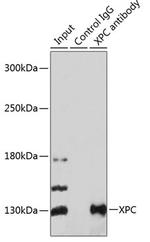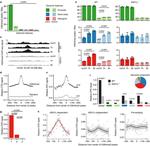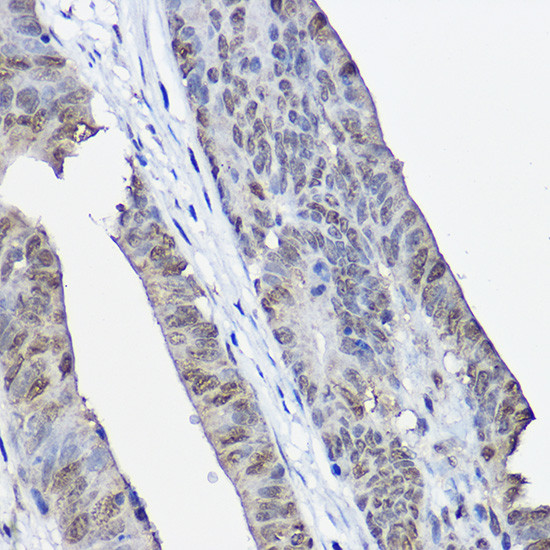Search Thermo Fisher Scientific
FIGURE: 1 / 4
XPC Antibody (PA5-97019) in IHC (P)




Product Details
PA5-97019
Species Reactivity
Published species
Host/Isotype
Class
Type
Immunogen
Conjugate
Form
Concentration
Purification
Storage buffer
Contains
Storage conditions
Shipping conditions
RRID
Product Specific Information
Immunogen sequence: GEVPYKMVKG FSNRARKARL AEPQLREEND LGLFGYWQTE EYQPPVAVDG KVPRNEFGNV YLFLPSMMPI GCVQLNLPNL HRVARKLDID CVQAITGFDF HGGYSHPVTD GYIVCEEFKD VLLTAWENEQ AVIERKEKEK KEKRALGNWK LLAKGLLIRE RLKRRYGPKS EAAAPHTDAG GGLSSDEEEG TSSQAEAARI LAASWPQNRE DEEKQKLKGG PKKTKREKKA AASHLFPFEQ L; Positive Samples: LO2, HeLa, 293T, HT-1080, Jurkat; Cellular Location: Cytoplasm, Nucleus
Target Information
This gene encodes a component of the nucleotide excision repair (NER) pathway. There are multiple components involved in the NER pathway, including Xeroderma pigmentosum (XP) A-G and V, Cockayne syndrome (CS) A and B, and trichothiodystrophy (TTD) group A, etc. This component, XPC, plays an important role in the early steps of global genome NER, especially in damage recognition, open complex formation, and repair protein complex formation. Mutations in this gene or some other NER components result in Xeroderma pigmentosum, a rare autosomal recessive disorder characterized by increased sensitivity to sunlight with the development of carcinomas at an early age. Alternatively spliced transcript variants have been found for this gene.
For Research Use Only. Not for use in diagnostic procedures. Not for resale without express authorization.
Bioinformatics
Protein Aliases: DNA repair protein complementing XP-C cells; mutant xeroderma pigmentosum group C; NER; p125; Xeroderma pigmentosum group C-complementing protein; xeroderma pigmentosum, complementation group C
Gene Aliases: p125; RAD4; XP3; XPC; XPCC
UniProt ID: (Human) Q01831
Entrez Gene ID: (Human) 7508

Performance Guarantee
If an Invitrogen™ antibody doesn't perform as described on our website or datasheet,we'll replace the product at no cost to you, or provide you with a credit for a future purchase.*
Learn more
We're here to help
Get expert recommendations for common problems or connect directly with an on staff expert for technical assistance related to applications, equipment and general product use.
Contact tech support
